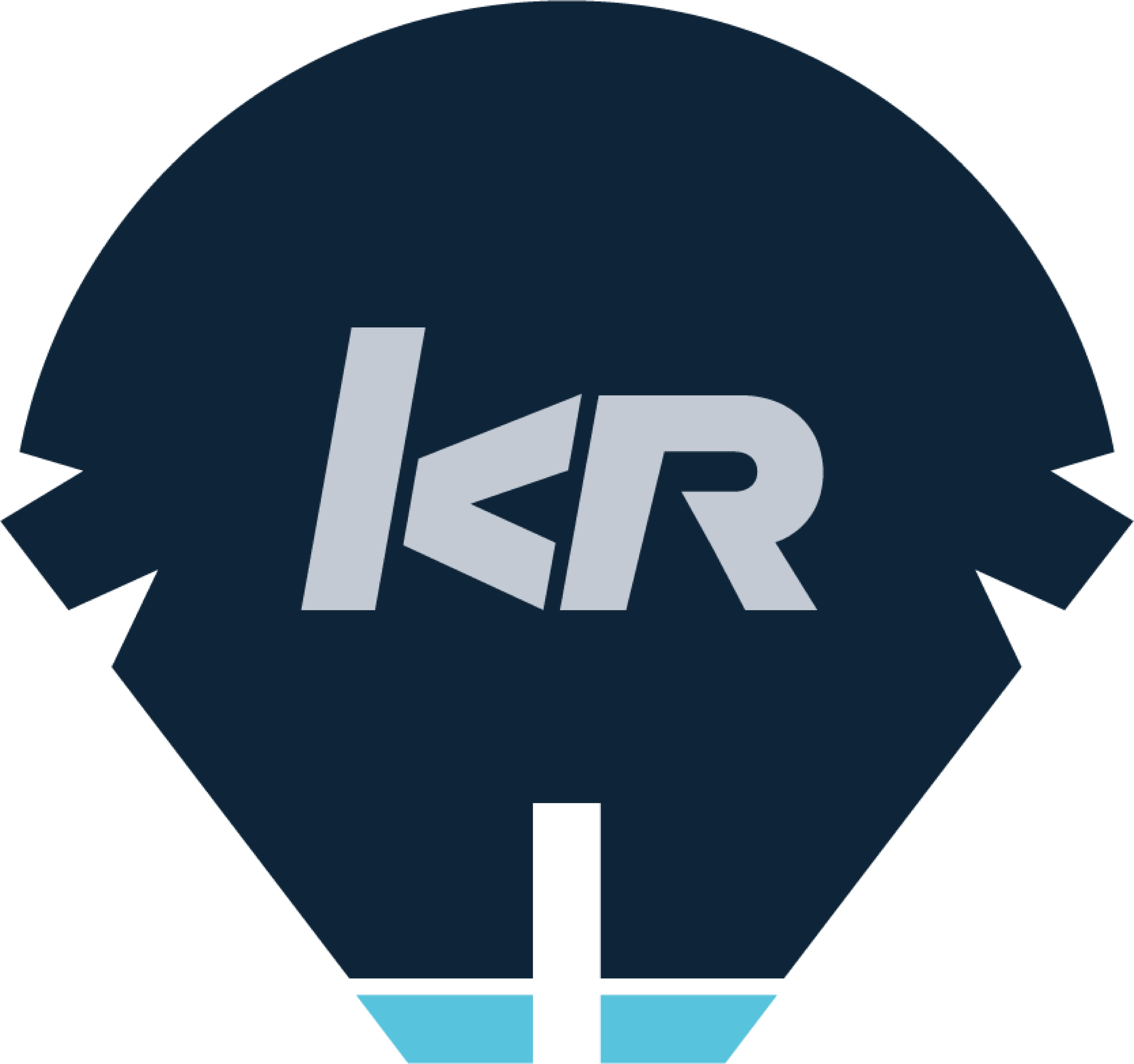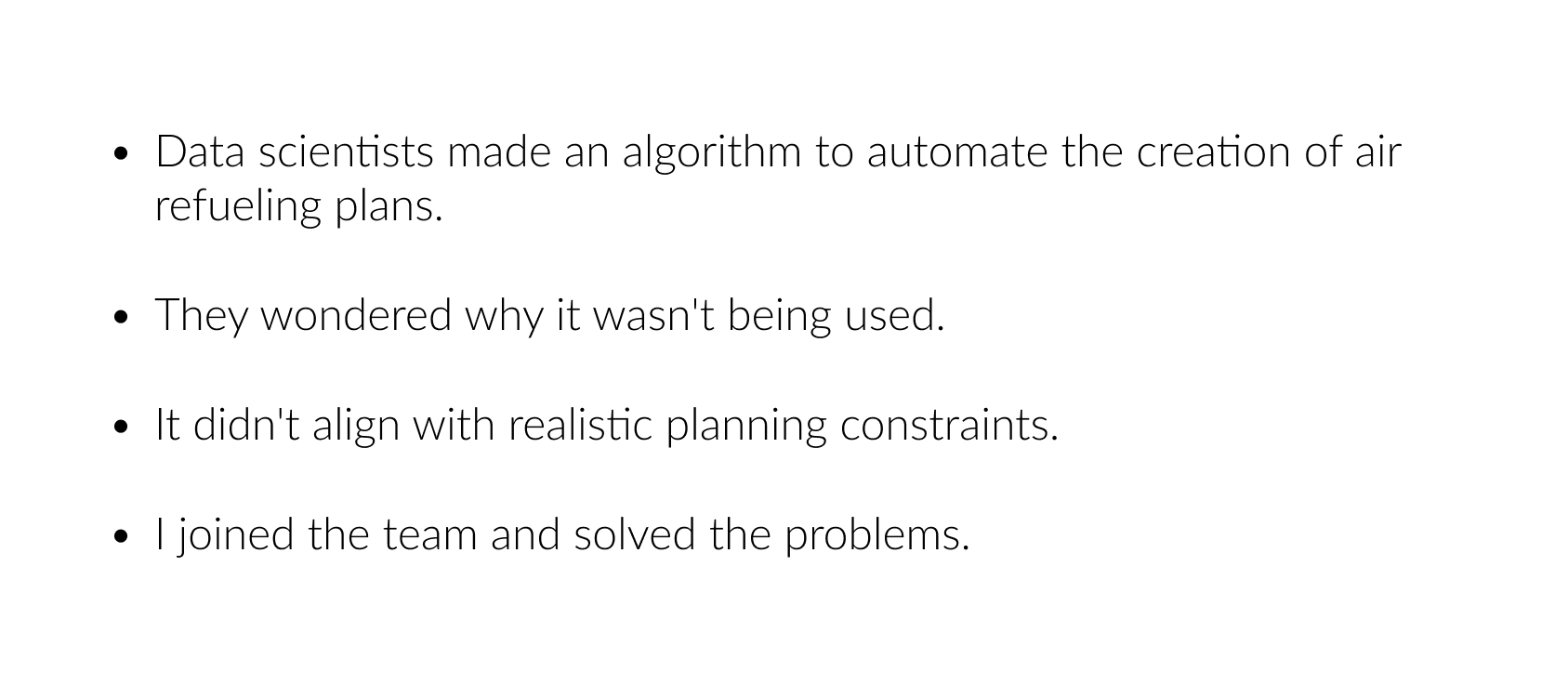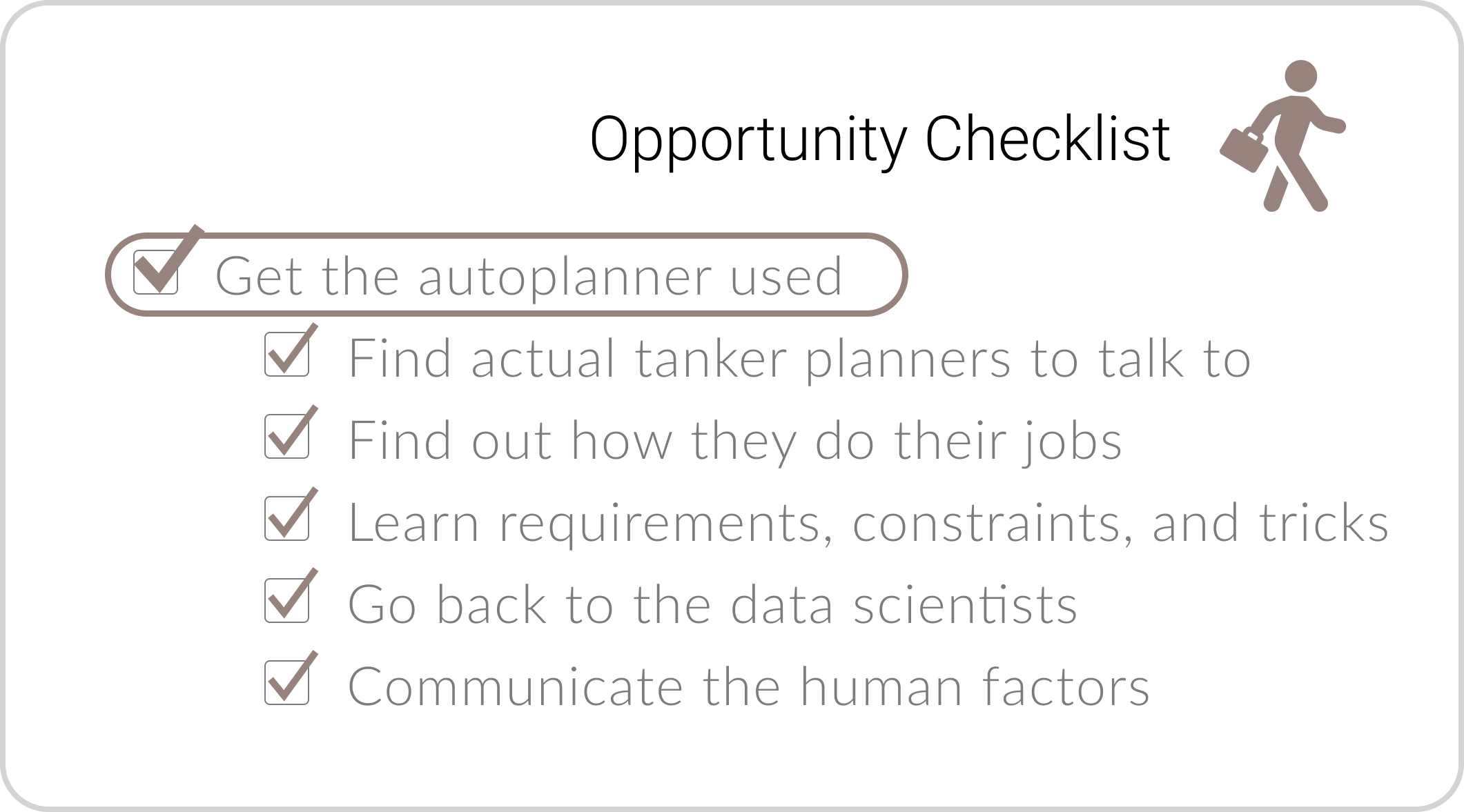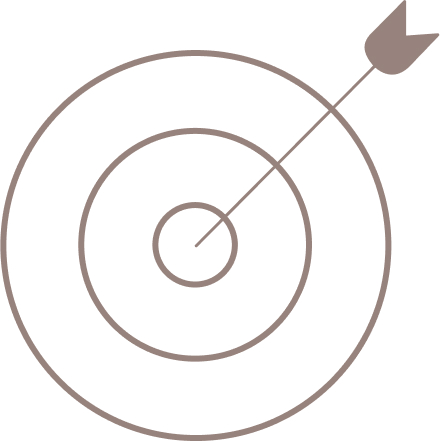case study
designing
UCD imperative
e-Commerce
autoplanner service
for Newbury Yarns

Security Disclaimer
In accordance with Government and USAF security protocol, product details, data, and elements of the product UI have been redacted and/or obscured.
Process at a Glance

Product Overview
Product Type:
USAF microservice
Product Type:
e-Commerce web application
BLUF (Bottom Line Up Front)

Why No One Used the Fancy Algorithm
The TL;DR of my contributions
Preface.
It's a broadly held assumption that the planners of tanker missions must prioritize the optimization of fuel in their plans.
An algorithm was developed by Kessel Run data scientists – intended to be an “autoplanner” feature of a tanker planning application – to optimize fuel consumption in the automated generation of refueling plans.
Enter: UCD.
When I joined the data science team, I was excited to help bridge a gap
- Data scientists with brilliant abilities had no context on the broader problem set.
- The product teams that have intimate context on their respective problem areas but no inkling of how data science could enhance their applications.
In collaboration with the data science team, I hashed out a plan to bridge user needs to the algorithm creators. I'd identify the problems to solve in order to achieve user-adoption of the auto-planner tool.

Phase 1: Be Curious
What exactly is this autoplanner?
Question 1: What does the “autoplanner” do, exactly, and how does it work?
Question 2: Why was it designed to function this way?
Question 3: Why isn’t it being used by the warfighters it was created for?
I formulated initial assumptions based on the existing “autoplanner”.
The answers to these would either be True or False
- Users actually need an autoplanner function
- Users plan their refueling missions based on fuel optimization
- Users don't need access to the application while the autoplanner service is running
- XX minutes to autogenerate a refueling plan is acceptable
Phase 2: (in)Validation

Assumption 1: Users need an autoplanner function = FALSE
BUT...
- The concept of an “autoplanner” is anathema to users with this role. They execute their jobs without it.
- Extenuating circumstances on a particular day of the research trip led to a time when users asked us for the autoplanner in order to complete their work.

Assumption 2: Refueling plans are based on fuel optimization = FALSE
(and this was the whole premise of the "autoplanner")
- After days of interviewing, shadowing and contextual inquiry, it was clear that users do NOT base plans on fuel optimization.
Phase 3: Big Discovery and UCD Solutions
After spending a few sessions with the data scientists and the prospective users of the autoplanner, I had the answers to my initial questions:

Question 1: What does the “autoplanner” do, exactly, and how does it work?
I learned that the autoplanner is based on an algorithm that optimizes fuel.
Question 2: Why was it designed to function this way?
It was designed to optimize fuel as a cost-savings method for the government.
Question 3: Why isn’t it being used by the warfighters it was created for?
It wasn't being used because tanker plans aren't based on fuel optimization.

User Research led me to the big discovery.
The whole concept of the autoplanner was based on a false assumption because in actuality, tanker plans are based on:
- Proximity
- Crew rest regulations
- Specific quotas
- Diplomatic agreements in geographical areas
- and more

Solutions.
We changed the algorithm to accomodate the criteria that tanker planners use to create their output product.
We gathered the rules for diplomatic agreements, crew rest regulations, and proximity figures, and built them into the algorithm.
By applying user centered design (UCD) to a great idea, we ensured it met the needs of the user and became a microservie with value to the market.
2022. Katharine Britten Howard